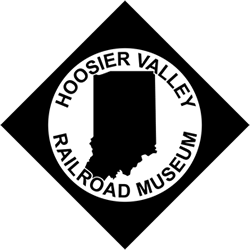The museum will be open starting May 3, 2025, from 9:00 to 4:00 pm CDT.
Live Poultry Cars
Live poultry cars were invented in 1884 for the safe transporation of chickens, ducks, geese, turkeys, and all manner of live fowl. You can read more information about these cars and their connection to North Judson, Indiana, in our historical article Turkeys & Trains.
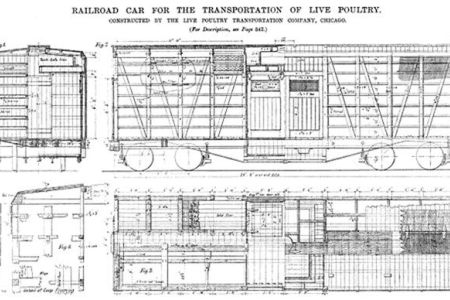
Advanced Technology to Hault Poultry
These cars were definitely advanced at the time they were built. Many of the cars were built in Indiana at car shops in either Michigan City or Terre Haute. Drawing from The Railroad Car Journal, January 1893.
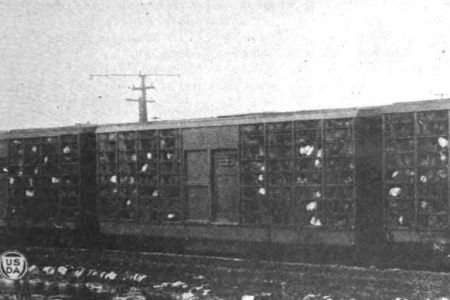
Cackle Cars and Fast Freights
Because of their unique cargo, live poultry cars often moved in fast freights bound for major cities. Just imagine how many feathers you could have found trackside during the industry's heyday. Photo from the U.S. Department of Agriculture.
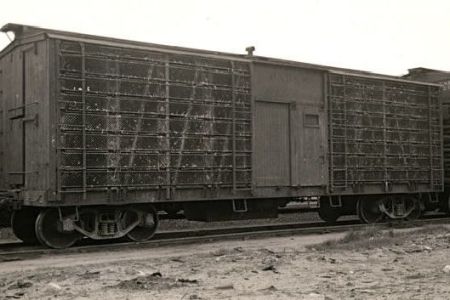
Life with Chickens
Sometimes called "cackle cars" for obvious reasons, live poultry cars were undoubtedly noisy and smelly places. Just imagine if you were the carman or attendant who had to live with 5,000 chickens for a week. Note the smokestack at the center of the car for the attendant's "stateroom". Photo from The American Railroad Freight Car.
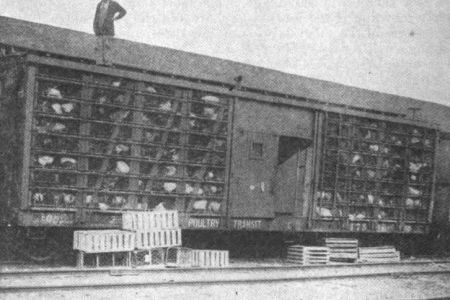
Live Poultry Transit Car no. 475
A man poses on top of live poultry car #475 in service for the Live Poultry Transit Company. Note all of the empty coops sitting outside of the car. The fowl were transferred from the coops to specially designed cages within the car.
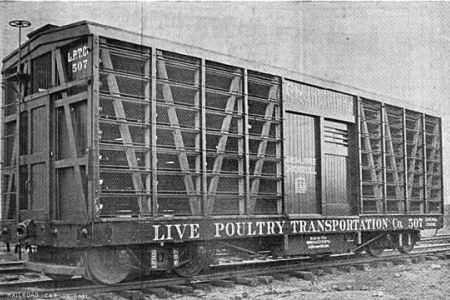
Live Poultry Transportation Company no. 507
It looks pretty sharp brand new, but it won't be long before thousands of live birds will mess up the nice paint job of Live Poultry Transportation Company car #507. LPTC was so proud of their fleet, that they named many of their cars. This car was named "Chanticleer." Note how low the car sat on the wheelsets. This was due to the higher than normal carbody. Photo from The Railroad Car Journal, January 1893.
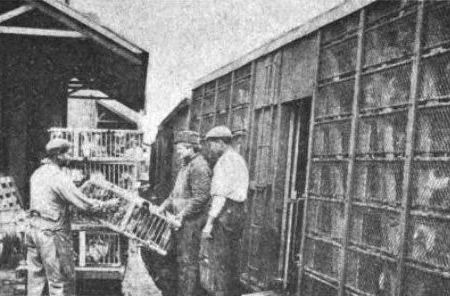
Loading Chickens Bound for Market
Here you can see a live poultry car being utilized for its intended purpose. These cars could haul as many as 5,000 chickens, depending on their size. The cars would sometimes roll along the line, stopping in various farm communities along the railroad to pick up chickens. Once the car was full, the chickens would be sent to market in a large city such as Chicago or New York. Photo from the Poultry Herald, October 1919.
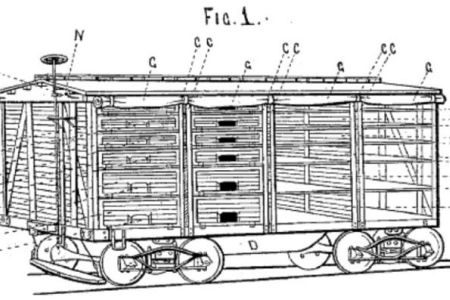
Original Patent Drawing
The first live poultry car was patented in 1884 by William P. Jenkins and James L. Streeter. Jenkins was a traveling freight agent for the Erie Railroad and Streeter was a poultry dealer in Muncie, Indiana. The drawing is crude, but the car they built revolutionized the hauling of poultry via rail.
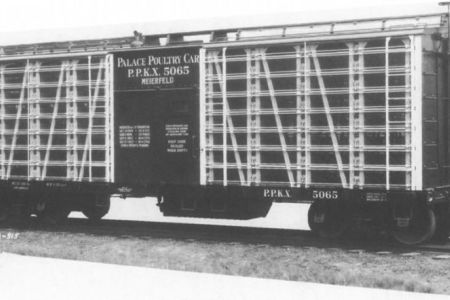
Palace Poultry Car no. 5065
The Palace Poultry Car Company was formed in 1924 as was the only real competition for the Live Poultry Transit Company. Their cars were similar in function, but rode higher on the rails. Both companies would eventually become part of the North American Car Company, with a fleet of more than 3,000 poultry cars roaming the nation. Photo from Agricultural History, Summer 1989.
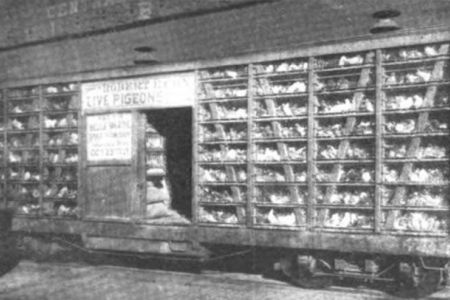
Pigeons Moved by Rail, Too
When you think of fowl, pigeons don't often come to mind. Although the meat is not as popular in America as it once was, pigeons and squab held a respectable market share in the late 19th and early 20th centuries. Photo from Technical World Magazine, March 1907.
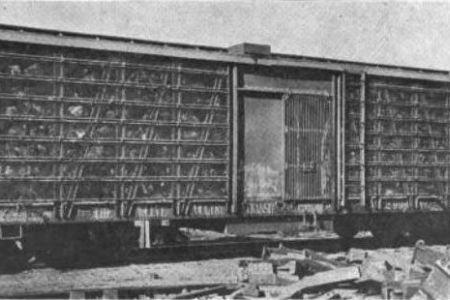
That's a Lot of Turkeys
A Live Poultry Transportation Company car is loaded down with live turkeys in Washington, D.C. It wasn't uncommon for turkeys to be shipped from areas in Tennessee to points on the eastern coast in what were called "turkey specials". Photo from Poultry Success magazine, March 1915.
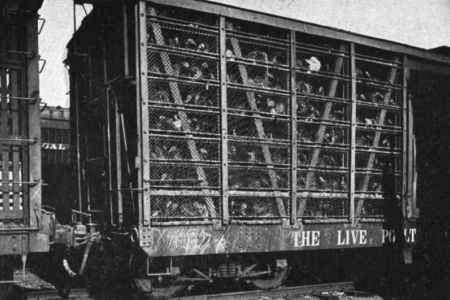
Turkeys and More
Turkeys were routinely shipped in live poultry cars until the 1920s. This car belongs to the Live Poultry Transit Company. Photo from the U.S. Department of Agriculture.
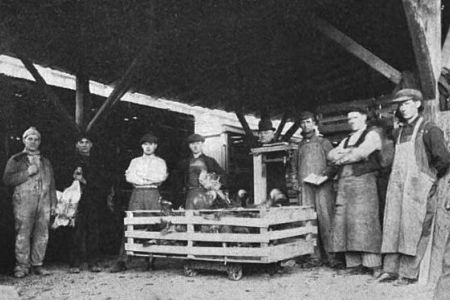
Turkeys at Market
Turkeys were more difficult to ship than other birds and often experienced "shrinkage" or weight loss because they often refused to eat en route. Still, railroads often ran "turkey specials" just before Thanksgiving and Christmas to meet the holiday demand. Photo from the U.S. Department of Agriculture.
No images were found.
Hoosier Valley Railroad Museum
507 Mulberry Street
P.O. Box 75
North Judson, Indiana 46366
P.O. Box 75
North Judson, Indiana 46366
Call or Email
574-896-3950 Depot Phone
[email protected]

